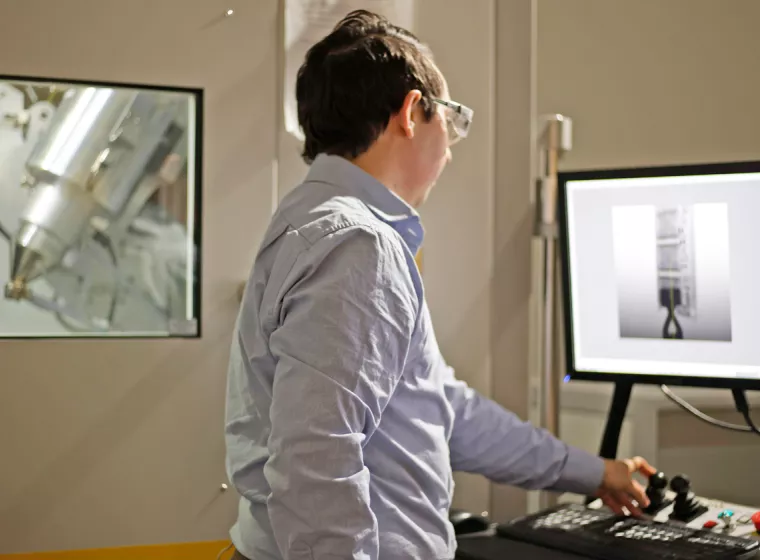January 13, 2022
A look at evaluating battery safety and risk in micromobility applications
The global micromobility market is expected to grow to USD $69 billion by 2028, representing a three-fold increase in the market over 10 years.
The recent global push for greener modes of transport due to efforts in reducing carbon footprints will likely further boost the growth of this market.
At the same time, high-profile incidents such as the e-scooter that caught fire on a London Tube platform and London's subsequent e-scooter ban on public transport highlight some of the challenges associated with the rapid expansion of micromobility devices and applications. Incidents like these emphasize the need for proper risk management for several reasons:
- The capacity and size of the battery packs in e-scooters and e-bikes (and consequently stored energy) can be substantial compared to other consumer electronic devices.
- These devices can be used (or in some cases, abused) in uncontrolled environments, both in terms of the physical environment and user misuse.
- Devices may be stored or transported in a variety of circumstances where battery-related thermal events or fires may pose a significant hazard. Examples include large storage facilities with other valuable or hazardous materials and confined public spaces such as underground rail carriages or crowded indoor public venues.
- The packs may suffer long-term aging and wear-and-tear without sufficient maintenance, servicing, or checks carried out on them.
Ensuring that these risks are considered and captured in product and service requirements can be a substantial challenge in the safety of these devices. While standards exist for some micromobility products, these are relatively new standards that are still evolving, and not all the products being introduced to the rapidly expanding global micromobility market meet all the design and test requirements established so far.
As lapses in battery quality and safety can contribute to fires, property damage, and bodily injury, it is important for micromobility companies to identify and address potential safety issues before incidents occur. Human factors, reliability testing, and cell and pack qualification are three important considerations to help reduce the likelihood of battery failures in the field for micromobility products.
Human factors
A significant component in risk assessments for micromobility products is consideration of human factors. Examples of such factors may include:
- How might users or contractors clean the micromobility device?
- Is it likely for users or contractors to modify or tamper with the battery pack or charger? Is there the potential for chargers other than those produced by the original equipment manufacturer (OEM) to be used?
- Might the devices be stored or transported in manners that may expose the packs to unexpected mechanical, environmental, or thermal conditions?
- Might the micromobility devices be used under fault conditions that consequently impact the pack? For example, what if the suspension breaks, tires run flat, or bearings begin to fail?
- Could foreseeable user behavior negatively impact the battery pack electronics or cells in a way that may not be obvious to the OEM?
A proper understanding of any adverse situations a product may endure is often critical to assessing risk associated with it. Due to the high level of direct user interaction with micromobility devices and associated battery packs, particularly in the manipulation and transportation of the devices, the human factors component of safety in these products can be a substantial consideration for risk assessment and mitigation.
Reliability testing
Many failure modes that occur in the field are difficult to assess through standard lab tests due to the unanticipated use and handling a micromobility device may undergo. For example, moisture ingress is a common root cause for several failure modes observed in the field. There are various methods for waterproofing micromobility devices, and most devices are manufactured with some form of waterproofing.
Depending on the type of water protection used, however, the handling of the device throughout its lifetime may compromise that protection. Mechanical damage, thermal cycling during winter or summer months, UV exposure, and other environmental degradation can compromise waterproofing over time and may impact the battery pack's safety and reliability.
Methods of waterproofing and manufacturing specifications may also play a role in the durability of waterproofing. For example, conformal waterproof coatings with the appropriate thickness may sufficiently protect the pack, but overly thick coatings may fatigue and crack over time. Their proximity to the printed circuit board (PCB) can even promote capillary water ingress once compromised, and the reduction in air flow can exacerbate the effects of moisture by inhibiting drying.
In contrast, thinner coatings may suffer from pinholes or incomplete coverage around components, which can allow for direct moisture ingress. It is therefore important that device manufacturers consider the wear and tear their device may experience and appropriately evaluate their enclosures through accelerated aging, abuse, and reliability testing.
Cell- and pack-level qualification
Battery qualification is important down to the pack and cell level. While initially cells may appear to perform well, cell-level degradation can result in numerous unwanted symptoms throughout the cell's life cycle. The high discharge rates required from micromobility devices may create significant amounts of heat which, if not properly dissipated, may cause cell issues, from reduced performance electrode and other cell component degradation to gas generation associated with electrolyte degradation.
Such issues can further compound and cause cell failure or lead to additional issues such as failure to charge or discharge effectively due to increased internal resistance. Excessive heat generation can also cause issues for PCBs, electrical components, or wiring.
Internal low resistance cell shorts are perhaps the most catastrophic consequence of cell manufacturing anomalies or degradation. Such shorts can potentially lead to thermal runaway events. The high charge current required for fast charging devices (often demanded by the consumer), anode design, anode to cathode ratio, or low operating temperatures can result in electrochemical deposits such as lithium metal.
These deposits can result in cell capacity loss and — in extreme cases — cause shorting through the separator, which can result in thermal runaway. More localized electrochemical deposits can also arise from cell irregularities such as burrs in the electrode edges, particles in coatings, and separator wrinkles.
Most manufactures endeavor to provide the highest quality and safest products, but internal cell faults that develop later in the product's life can be hard to identify for any manufacturer. Additionally, the user may be responsible for replacing aged batteries at the appropriate time with the manufacturer approved replacement.
While there are often cheaper alternatives for replacement batteries on the market, these may not have undergone the same qualification and testing and could be inappropriate for use in micromobility devices.
How Exponent Can Help
Exponent is a multidisciplinary consulting firm with expertise in numerous aspects of the design, manufacture, and testing of micromobility devices. Our mechanical, materials, and electrical engineering teams have extensive experience evaluating individual components of micromobility devices such as brakes, suspensions, and structural elements, as well as testing the entire device. These tests are often conducted under normal and aggressive use conditions to simulate the stress users may place on devices over the lifetime of the product.
Our battery engineers and electrochemists have helped develop and conduct test protocols for accelerated aging studies, cell cycling procedures, and mechanical testing of lithium-ion battery packs used in these devices. We can leverage decades of experience in proper manufacturing practices and failure analysis to help our clients design and manufacture safer, more reliable products.
What Can We Help You Solve?

Micromobility Products
Improve the safety and performance of micromobility devices such as e-bikes, e-scooters, and hoverboards.

Custom Battery Testing
Custom product safety, performance, and industry certification battery testing services.

Electrical & Thermal Performance
Identify weak points in device design by characterizing the thermal and electrical properties of functioning electronics.

Product Development
Expert electrical engineering and computer science consulting services for every stage of your product journey.




